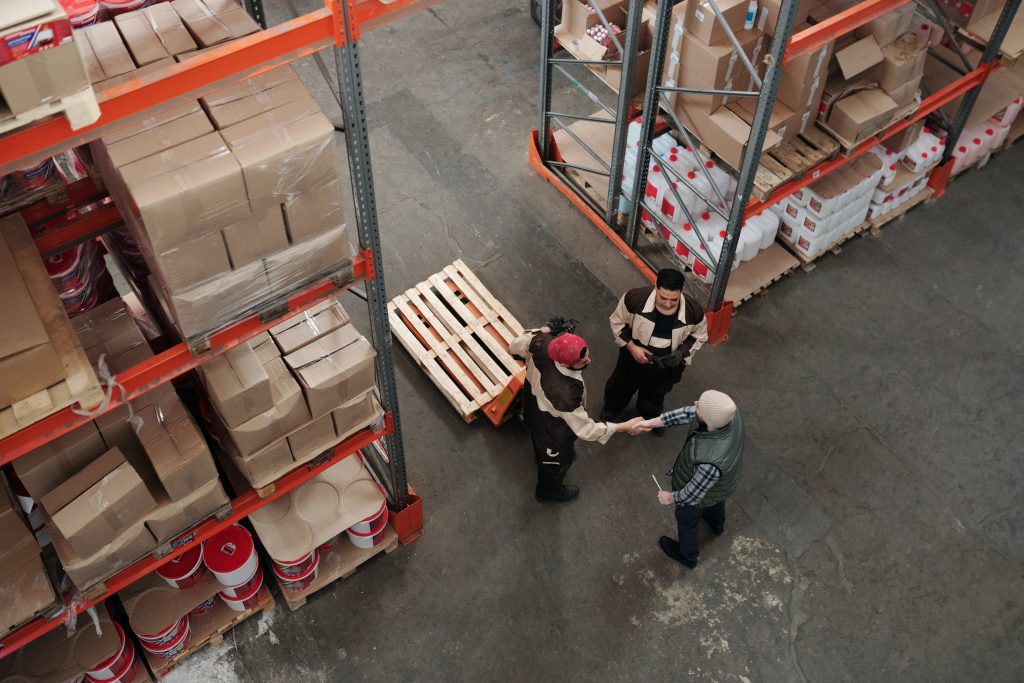BLOG
10 common health and safety policy mistakes | Top tips for getting it right
Written by Scott Crichton on 1 February 2022

A well-considered health and safety policy – an organisation’s strategic intentions supported by a clear delivery plan – is the starting point of any effective safety management system. It forms an important part of the ‘Plan, Do, Check, Act’ approach recommended by the HSE and helps organisations to set out how hazards and risks are managed, thereby supporting consistency, awareness and compliance.
If you employ five or more employees, having one is also a legal requirement under the Health and Safety at Work etc Act 1974. Even in smaller businesses, a health and safety policy is arguably the best way to demonstrate, morally if not legally, that you are effectively managing risk by putting your intentions on paper. After all, research shows that workers are more productive in workplaces that are committed to health and safety, and a clear policy is instrumental to establishing that commitment.
Unfortunately, in our experience, these essential documents often miss the mark. They may be too long (or not long enough), missing important information, compiled incorrectly, or too generic to have any practical value. In some cases, they’re simply created as a box-ticking exercise and left to sit on a shelf.
With this in mind, here’s our list of 10 areas where health and safety policies commonly fall down.
10-point Health and Safety Policy Checklist
Is your health and safety policy effective? Use this simple checklist to review your policy and make sure it contains everything it needs to and has practical value in managing workplace risks.
1. No statement of intent
All policies should start with a written statement of intent which sets out your general approach to managing workplace hazards and risks. This typically takes the form of a one-page document signed by the most senior person within the organisation and can be supported by a Chair of a Board to add additional weight.
Often these documents are either missing or not signed, leading to a lack of demonstratable commitment from senior individuals in the organisation, which then has an impact on health and safety culture.
Additionally, statements of intent should cover health, not just safety. They should, for example, consider stress, mental health and wellbeing, particularly given the HSE’s recent emphasis on workplace health, which it says “should be treated with the same significance as risks of poor physical health and injury.”
Finally, make sure your statement of intent explains what you’re aiming to achieve by implementing your policy in the form of health and safety performance indicators. The importance of setting clear and measurable objectives is often overlooked.
Do you need support?
Speak to us for an honest, no obligation chat on:
0345 226 8393 Lines are open 9am – 5pm
2. Doesn't specify how health and safety is organised
Your health and safety policy should outline the structure of your organisation and set out key health and safety roles and responsibilities in terms of who will do what. This organisation section normally forms the second part of a health and safety policy. Without this clarity, it will be easy for wires to get crossed, ultimately making it more likely that things won’t get done and potentially leading to a culture of ‘it’s not my job’.
One way to approach this is through an organisational chart which helps to visually define how health and safety is managed within your organisation. Responsibilities can then be defined in Role/Job Descriptions to support this.
Make sure your organisation plan captures:
- Who has overall responsibility of managing health and safety within your organisation.
- Who has day-to-day responsibility for effectively implementing your policy.
- Who your health and safety champions are (these people play a key role in the implementation and review of the policy).
Like in sports, health and safety is very much a team effort, and your policy should reflect this.
3. Doesn't cover all relevant hazard areas
Your health and safety policy should set out the arrangements you have put in place for managing relevant health and safety risks. The arrangement section should form the largest part of your policy, with real thought given to the specific hazards present in your environment.
Typically, however, this is where weaknesses and opportunities for development can be found, as employers sometimes miss very obvious and significant hazards (a health and safety policy within a manufacturing business, for example, would need to cover things like machinery, noise and vibration, and failing to do so would be a big red flag to someone scrutinising your policy such as an inspector, insurer or supplier).
Arrangements typically cover areas such as asbestos, consultation, evacuating your premises, risk assessments, training and working at height, to name just a few.
It’s a good idea to have an index in place which lists all hazards linked to your organisation – sort of a policy matrix – and ensure that your policy covers all the significant hazards that you, your employees and others face from the work that you undertake. This will also help to ensure that your policy isn’t generic, which is another common downfall.
It may be more appropriate to have shorter policies that cover specific areas such as display screen equipment, first aid and working at height.
4. No worker involvement
Organisations tend to produce health and safety policies with little, if any, input from their workforce. However, involving employees in the creation and review of policies is a great way to increase awareness of risk and encourage ownership.
Linked to this, it’s a good idea to produce an accompanying employee handbook which translates the contents of your policy into the relevant information employees need to work safely. Not every organisation has a health and safety handbook (indeed, they are not required by law), but this can be a fatal flaw, as it can mean the contents of your policy aren’t properly communicated; after all, it’s far more likely that employees will digest a jargon-free 20-page handbook than a 50-page policy.

5. No evidence the policy has been communicated and read
Often, employers share policies with their workforce, however there is no obvious indication that employees have read them. You should communicate the policy (and any subsequent amendments) to staff and ideally obtain documented evidence that this has been received, read and understood. Failing to do so can be a costly mistake, particularly in the event of an accident, where you may need to prove that the employee was made aware of your health and safety rules and procedures.
There are numerous ways to obtain confirmation, whether through physical or digital signatures, using systems that send an automatic notification whenever a shared document is read, or simply making this a part of your induction process. All of this will strengthen your claims defensibility should an incident occur.
6. Not easily accessible
Your policy should not be clouded in mystery or covered in dust. It should be readily available to internal and external stakeholders within your organisation. It should also be easily accessible to employees (perhaps via the company intranet) to prevent any excuse for not having read it.
7. Too long
Though some health and safety policies lack important information, others are much longer that they need to be. While they should cover all bases, they should be succinct and purposeful. It shouldn’t be a dense, daunting document that no individual has the time or inclination to read, or that people have to wade through to get to the information they need.
8. Not discussed with other occupiers/organisations
Within your policy, you should consider how you will co-operate and co-ordinate with other employers with whom you share premises. As well as being a legal requirement, failing to do so lead to a lack of control and the assumption on both sides that the other party is managing certain risks, when in reality neither party is.

9. Not reviewed annually
A health and safety policy is a living, breathing document and should be reviewed often (at least annually). In many cases, organisations assume that producing a health and safety policy is a one-time task, when in reality it’s about effectively managing risk and therefore continual improvement is essential to keeping your policy alive.
The policy should be referred to when incidents (accident and near misses) happen and when there are significant changes to how your organisation operates.
10. Not written by the right people
Organisations can write health and safety policies themselves, and there’s no legal requirement to involve professionals. Indeed, the HSE says health and safety policies are best written by someone within the organisation, as it needs to reflect the organisation’s values and beliefs, as well as your commitment to providing a safe and healthy environment.
That said, producing these important documents can feel like a daunting task, particularly if you’re not the most safety-savvy, strapped for time, or don’t know where to start, so there are benefits of enlisting experts to assist you.
Working alongside specialists such as WorkNest is often the best solution, as this joint approach means your policy will not only benefit from your own unrivalled knowledge of your business and its risks but also expert industry knowledge, ensuring your policy is robust, fit for purpose and reflects best practice. What’s more, it’s the safest way to avoid the many common mistakes outlined in this article.

Related Content
Your health and safety policy sorted
Your health and safety policy is arguably one of the most important policies your business needs, so it’s important to get it right. Whether you’re starting from scratch or in need of an expert review, WorkNest assigns named Health & Safety consultants who will work with you to produce a policy and handbook tailored to your organisation, then help you to implement and maintain it through ongoing support.
For more information about our fixed-fee Health & Safety service, call 0345 226 8393 today or request your free consultation using the button below.



